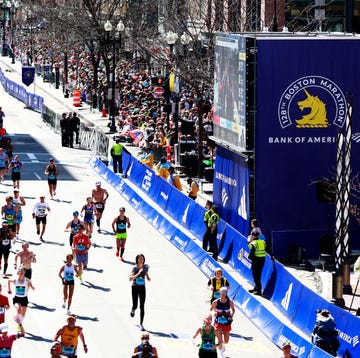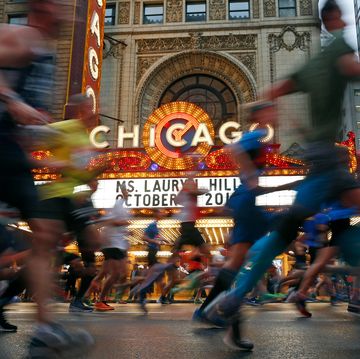Last week’s lavish opening ceremony at the 2024 Summer Olympics in Paris raised a few eyebrows. In some circles, the event caused enough outrage that viewers declared it “the worst opening ceremony ever,” which is quite a claim considering the 1936 opening ceremony had Hitler in it. Like, the actual Hitler, doing his Hitler thing.
This year’s main point of contention revolves around the inclusion of two controversial scenes. The first was the depiction of a ‘menage-a-trois’ arrangement between three dancers, while the latter was, depending on who you ask, a recreation of the painting Le Festin des Dieux (The Feast of the Gods) by Jan van Bijlert, or L'Ultima Cena (The Last Supper) by Leonardo da Vinci. Ether way, it had a very prominent Bacchus/Dionysus sitting on a platter at the center of the table.
By incorporating a ménage-à-trois and the Greek god of “fertility and ritual madness” into an Olympic tradition typically reserved for dazzling drum displays, daring jetpack stunts, and commanders of the Third Reich, the French brought light to an element of the Olympic experience that’s usually at play when the lights go out: that in addition to grit, gamesmanship, and going for gold, some of the competing Olympians are focused on getting it on.
It’s not just lascivious speculation on our part to suggest that the Olympic Village in Paris is what the French might call a tanière de baise effrénée, as Olympic organizers have taken proper precautions to ensure this year’s Olympians have all the equipment they need to succeed: According to CBS News, those in charge have supplied a whopping 300,000 condoms to the 14,250 athletes competing in the Summer Games and staying in the Village.
Within this group of 14,250 athletes, including 120 U.S. Track and Field representatives, there are competitors of all ages, relationship statuses, and ethical convictions. So it’s highly unlikely that every Olympian will make use of these allotted contraceptives. But, simply for the sake of this thought experiment, let’s assume everybody procures an equal number of condoms from the total supply.
That would mean, for example, the 120 Track and Field athletes from Team USA will receive 2,520 condoms, or 21 condoms per athlete. Divided across the 19 days of official competition, that comes out to about 1.11 condoms per day.
Let’s also say, for the sake of the experiment, that any lustful interactions at the Olympic Village are happening between two people (though the trio in the opening ceremony would beg to differ). That means a shared 2.22 condoms per day.
According to a study published in the Archives of Sexual Behavior in 2017, the average frequency of sex for the typical American in a given span of time can vary based on age. So, considering how often you hear commentators say things like, “Thirty years of age, in the twilight of her career,” let’s focus on the statistics for people in their 20s.
That study determined that “Americans in their 20s had sex an average of about 80 times per year,” or roughly 1.5 times a week. That would mean an Olympian in their 20s will only have sex around four times during the Summer Games, so 21 condoms per person would certainly be enough, with plenty left over for souvenirs.
Of course, most Olympians are decidedly not like the average person. So, how do we account for that? While John Q. Regularguy is only having sex 1.5 times per week, somebody like, say, Wilt Chamberlain—who, astoundingly, never competed in the Olympics himself—once claimed he had 23 different sexual partners in a 10-day span.
But Wilt Chamberlain was a basketball player in the freewheeling 1960s, and not an elite runner in the 2020s, so it isn’t instructive to use Wilt the Stilt’s escapades as a realistic benchmark for today’s track stars. Indeed, the only concrete evidence we have to reasonably measure a modern-day Olympian’s extracurricular activities is the fact that Olympic organizers keep boosting the Village condom count every time out.
According to a Reuters article from 2008, organizers at that summer’s Beijing Games hoped 100,000 condoms were enough to satisfy the needs of Olympians, since the athletes at the 2000 Sydney Games “exhausted a supply of 70,000, and another 20,000 had to be brought in.” It wasn’t enough; the 2004 Athens Games “doubled the number” in response. The 2016 Rio Games broke records with an astonishing 450,000 condoms on hand, including 100,000 female ones for the first time, according to The Athletic.
When you take those stats into account, as well as the many tales of Olympic Villagers’ seemingly infinite amorous encounters, 21 condoms per person across 19 days doesn’t sound so excessive. In fact, maybe they need more.
After all, a study in the International Journal of Sports Medicine found that having sex the night before a competition doesn’t have any detrimental effects on athletic performance, and in fact, might actually boost your performance because it reduces your anxiety and muscle tension. And additional research in Frontiers in Physiology suggests moderate sexual activity can lead to better cardiovascular function and increased strength.
So, when you watch Team USA athletes going for gold in Paris, remember: they might just require more rubber than the stuff on the track.
Michale Natale is a News Editor for the Hearst Enthusiast Group. As a writer and researcher, he has produced written and audio-visual content for more than fifteen years, spanning historical periods from the dawn of early man to the Golden Age of Hollywood. His stories for the Enthusiast Group have involved coordinating with organizations like the National Parks Service and the Secret Service, and travelling to notable historical sites and archaeological digs, from excavations of America’ earliest colonies to the former homes of Edgar Allan Poe.














